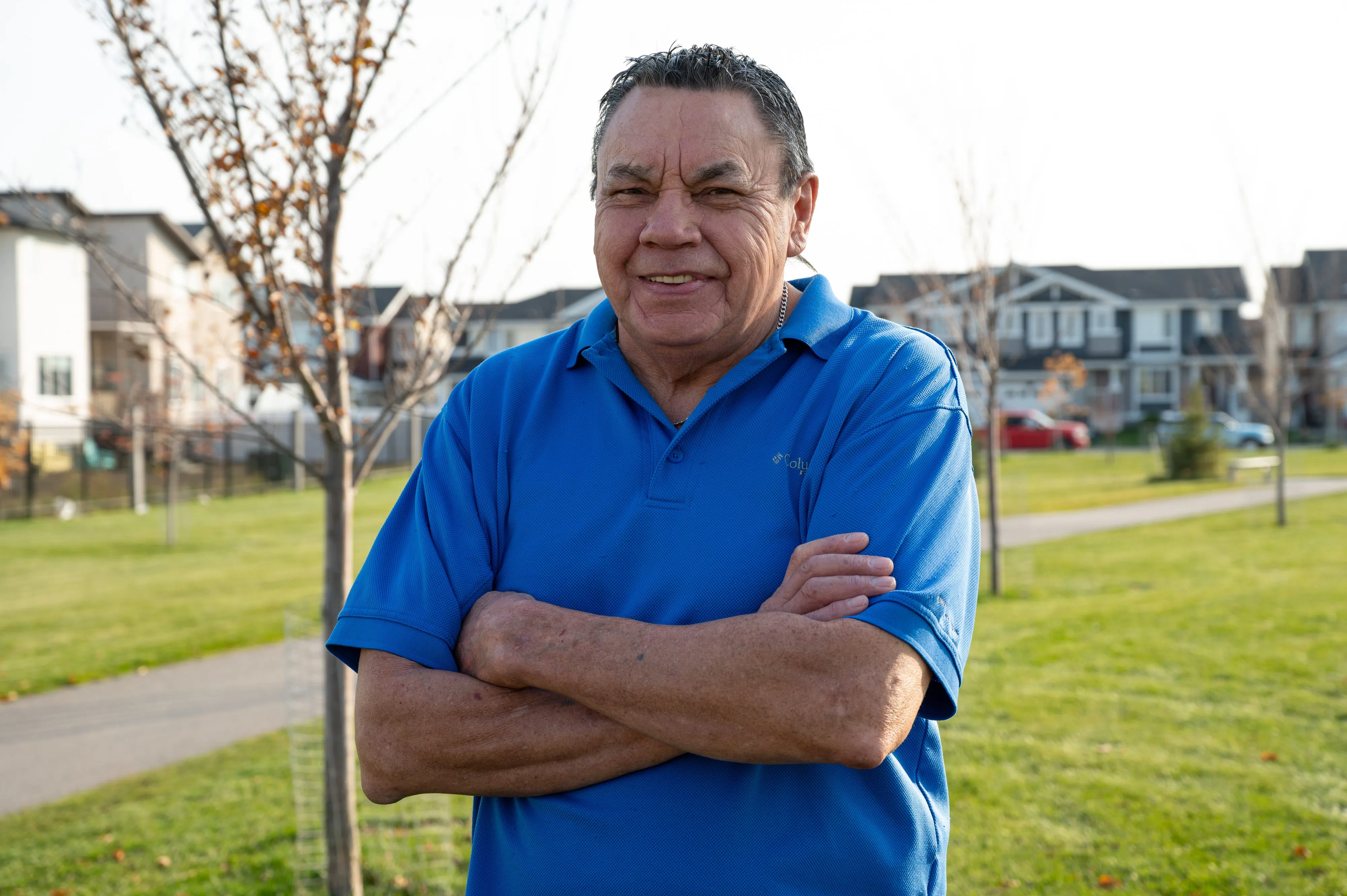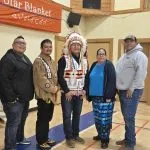
A new City of Regina art installation highlights its complicated railway history
Art can be more than just something pretty to hang on a wall, it can be used to educate – just ask Lionel Peyachew.
Originally from Red Pheasant First Nation located in Treaty 6, he has taken on the task of creating a one-of-a-kind, railway-themed art installation.
The sculpture, expected to be completed next fall, will merge his two passions education and art.
“It will tell about the railway,” said Peyachew. “Yes, it had a lot of good implications but there’s also a dark past where the buffalo were killed off (and) the bones were thrown on the train and then sold.”
The piece called The Last Spike will be a railway car with a twist.
According to the City of Regina’s website, the city was once a place where large herds of bison roamed. Around the mid 1800s the bison numbers were dropping due to overhunting by Europeans. Indigenous hunters began stacking the bones in huge piles to honour the animal.
The bison were killed primarily for their robes and for sport, while their carcasses were left behind on the plains to rot.
The area – now present-day Regina – was called oskana ka-asastēki, a Cree word meaning “bone piles” which settlers began calling Pile of Bones.
The sculpture will be located at Horizon Station Park, which is a year-round recreation area with a train-themed playground located at 4701 Buckingham Drive.
The Last Spike will be a two-foot-long metal wood covered boxcar with an 8’x8’ doorway set with bronze and powder coated buffalo skulls.
At night it will be lit up for people to view.
“That will then make it look like it’s full of buffalo skulls,” said Peyachew.
Once completed it will emphasize the unique relationship between the railway and the bison.

While designing his piece, Peyachew thought about the buffalo skulls being loaded up and shipped off to different parts of the world.
“You wonder how many of these boxcars were full of buffalo skulls and shipped out of Canada mostly to the far east to make bone china,” said Peyachew. “It’s heartbreaking to think how many buffalos were killed off just to be used as a commodity.”
He also thought about how many buffalo were killed to create the railroad. The plains were cleared of the bison, which was the main food source for the First Nations people. Treaties were then negotiated and the people moved on to reserves, which allowed for the completion of the railway.
“A lot of the chiefs didn’t like the idea of giving up their [traditional territories],” said Peyachew.
He hopes the sculpture once completed will spark conversations.
“It’s an educational sculpture,” said Peyachew.
Placards will be displayed around the park to help explain the history of the railway, buffalo, and people of the surrounding area.
Peyachew’s interest in art began in high school.
After graduation, went to the Alberta College of Art and Design in Calgary and focused on sculpting. Some time later, he returned to academia to pursue an education degree but ended up with a master’s in sculpting from the University of Calgary.
Peyachew realized art has the ability to educate because it gets people talking about tough subjects.
His sculpting career began in Regina in 2004, when the First Nations University of Canada and the University of Regina commissioned him to create the The Four Directions sculpture.

